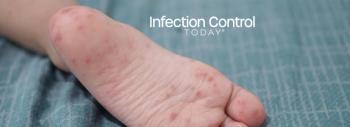
SHEA, IDSA Present Course on Antimicrobial Stewardship
The course, "Implementing Antimicrobial Stewardship Programs: A Workshop on Development, Maintenance and Measuring Success," will be offered as a pre-meeting workshop to the annual meeting of the Infectious Diseases Society of America (IDSA) on Oct. 20, 2010, from 8 a.m. to 5 p.m. at the Vancouver Convention and Exhibition Centre.
The course is co-organized by the Society of Healthcare Epidemiologists of America (SHEA) in cooperation with the Centers for Disease Control and Prevention (CDC). The course will consist of an in-depth program on how to create, implement, or improve an antimicrobial stewardship program (ASP) and will address decision and data points to guide design and implementation; strategies and methods for formulating and presenting a convincing business case rationale; and tools to measure impact and outcomes.
The course fee is $250. To register,
Newsletter
Stay prepared and protected with Infection Control Today's newsletter, delivering essential updates, best practices, and expert insights for infection preventionists.






